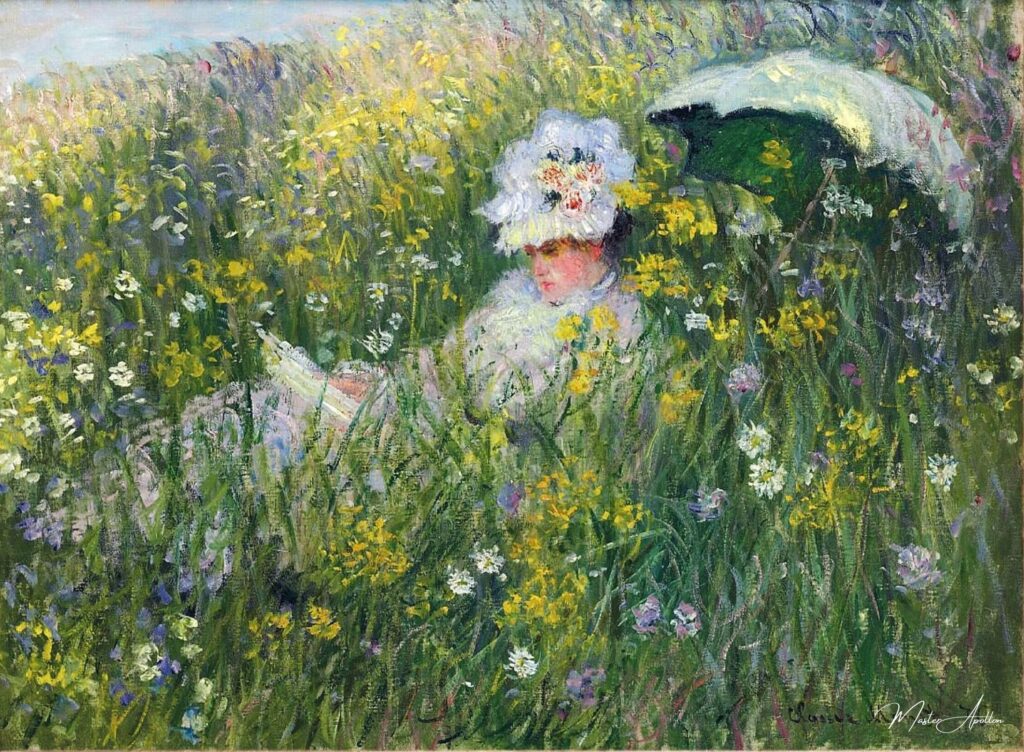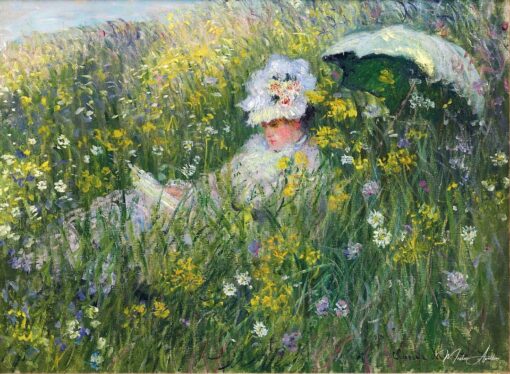Your cart is currently empty!

In the Meadow – Claude Monet
Step into the enchanting world of Claude Monet with this exquisite oil painting reproduction of “In the Meadow.” Immerse yourself in the vibrant colors and delicate brushwork that have made Monet one of the most celebrated artists of all time.
Crafted with the utmost care and attention to detail, this reproduction captures the essence of Monet’s original masterpiece. Every brushstroke and colo…
In the Meadow – Claude Monet
Introduction
Claude Monet’s In the Meadow is a stunning example of his ability to transform everyday scenes into mesmerizing works of art. Painted in 1876, this piece captures the serene beauty of a sunlit meadow, offering a glimpse into Monet’s Impressionist style during a period of creative growth. Filled with vibrant colors, light, and emotion, In the Meadow celebrates the harmony between humanity and the natural world.
The Scene: A Meadow Full of Life
The painting depicts a tranquil meadow where lush grass sways gently under a warm, dappled light. A woman dressed in white, likely Monet’s wife Camille, reclines on the grass, exuding calm and leisure. This scene, set near the Monet family’s home in Argenteuil, reflects the artist’s love for the outdoors and his commitment to capturing the fleeting beauty of nature.
The meadow itself becomes a character in the painting, with its vibrant flowers, soft grasses, and sunlit patches. Monet’s use of natural elements creates a sense of intimacy and timelessness, as though the viewer is witnessing a private moment frozen in time.
Artistic Techniques in In the Meadow
The Play of Light and Shadow
One of Monet’s defining characteristics as an artist is his ability to capture light. In In the Meadow, sunlight filters through unseen trees, casting playful shadows on the grass and creating a dynamic interplay between brightness and shade. The effect is both realistic and magical, drawing the viewer into the warm embrace of a summer’s day.
Brushwork and Texture
Monet’s loose, fluid brushstrokes breathe life into the painting. The grass appears to sway in the breeze, and the flowers seem to dance under the sun. By focusing on the overall impression rather than fine details, Monet conveys the energy and movement of the scene, allowing viewers to feel as though they are standing in the meadow themselves.
Color Palette
The color palette in In the Meadow is dominated by rich greens, soft blues, and warm yellows, punctuated by the delicate whites and pinks of flowers. These colors harmonize to evoke the freshness of the natural environment. Monet’s subtle use of contrasting tones adds depth and dimension, while the softness of the palette creates a sense of tranquility.
Camille Monet: A Muse in Nature
The inclusion of a figure, most likely Camille Monet, adds a personal and emotional element to In the Meadow. Camille was a frequent subject in Monet’s works, and her presence here emphasizes the artist’s deep connection to family and domestic life.
Camille’s relaxed posture and serene expression reflect the simplicity and joy of living close to nature. Her white dress contrasts beautifully with the vibrant greenery, drawing the viewer’s eye to her figure and reinforcing the theme of harmony between people and the natural world.
The Emotional Resonance of In the Meadow
At its core, In the Meadow is a celebration of life’s quiet, unassuming moments. Monet captures a universal experience—the peace of lying in a sunlit field on a summer’s day. This emotional connection makes the painting deeply relatable, transcending time and place.
Through his mastery of light, color, and composition, Monet transforms the ordinary into the extraordinary, reminding viewers of the beauty that exists in the world around them.
The Legacy of In the Meadow
In the Meadow is a testament to Monet’s innovative approach to painting. It exemplifies the Impressionist movement’s focus on capturing the immediacy of experience and the transient qualities of light and atmosphere.
This painting also foreshadows Monet’s later works, where he would further explore the relationship between people and nature, culminating in his iconic garden and water lily series.
Today, In the Meadow remains a beloved work that continues to inspire artists and art lovers alike, serving as a reminder of Monet’s genius and his enduring impact on the art world.
Conclusion
Claude Monet’s In the Meadow invites us to step into a serene moment of quiet beauty. Through his masterful techniques and emotional depth, Monet captures the essence of a summer’s day, allowing viewers to connect with the natural world in a profound and personal way.
Whether you’re an admirer of Impressionism or simply a lover of nature, In the Meadow is a painting that will resonate deeply, reminding us to pause, breathe, and find joy in the simple pleasures of life.
Claude Monet
Claude Monet was a pioneering French painter and a leading figure in the Impressionist movement, celebrated for his innovative use of light, color, and brushwork to capture fleeting moments in nature.





Leave a Reply